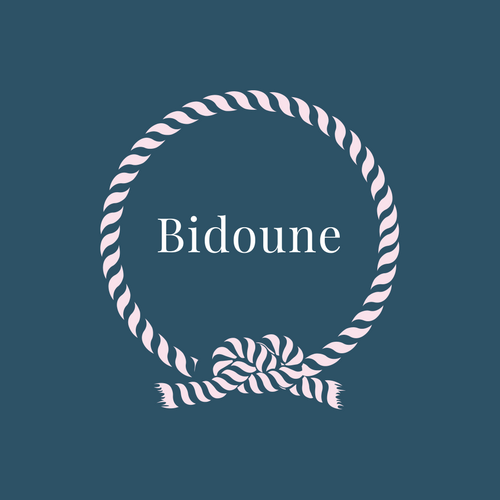Chronicles of an Educator
Mastering Intentional Program Design for Transformative Outdoor Education
1st Oct 2023
Coercion vs Intentional Program Design
Last month, I led a training session where I delved into the intriguing world of intentional program design for Outdoor Education. It's a topic that often sparks a passionate debate: Can we truly "force" learning? However, it's crucial to differentiate between coercion and intentional program design.

Team training: How can we be intentional in our learning outcome when running a coasteering session.
I often like to borrow an analogy from one of the leading facilitators in the field, Yen Kai Lye, the Managing Director of Pivotal Learning. The analogy goes like this: You can lead a horse to the pond. Bringing the horse to the pond represents the activity in your program. Now, let's say our goal is for the horse to drink from that pond. Coercion would be to force the horse to drink the water. By contrast, in a non-intentional program design, we simply provide opportunities for the horse to drink and hope it does. We're content even if the horse decides to do something else by the pond.
But here's where intentional program design comes into play. It's about making that horse thirsty enough to want to drink the water. Neither do we use force nor do we leave it to chance. So, how do we achieve that thirst? It's in the art of crafting experiences that ignites that desire. This is something most educators and facilitators, myself included, aspire to achieve to varying degrees of success.
While not an expert, I've found that three key ingredients stand out in making intentional program design a success: the design of activities, the sequencing of activities, and the questions we ask. And the beauty is, we have control over all three.
But here's where intentional program design comes into play. It's about making that horse thirsty enough to want to drink the water. Neither do we use force nor do we leave it to chance. So, how do we achieve that thirst? It's in the art of crafting experiences that ignites that desire. This is something most educators and facilitators, myself included, aspire to achieve to varying degrees of success.
While not an expert, I've found that three key ingredients stand out in making intentional program design a success: the design of activities, the sequencing of activities, and the questions we ask. And the beauty is, we have control over all three.

How can we make the horse thirsty?
Why do we need to be intentional?
Before delving into the three key ingredients, it's essential to understand why we should prioritize intentionality in our program design and learning outcomes. Don't get me wrong; there's a place for non-intentional approaches from time to time, but even in those moments, it's crucial to be intentionally non-intentional, if that makes sense. I'll admit that I often find myself in that camp. However, if you constantly lean towards being non-intentional, chances are that you worry that things might feel forced, artificial, or overly rigid. Or you are unsure of how to go about doing it. These concerns are entirely valid and I would invite you to hear me out. I believe that the three ingredients below will help in approaching intentional program design in a natural way. But before that, let's look at why is it important to be intentional.
The significance of intentionality lies in our role as trained and experienced educators. We should be well-positioned to discern the needs of our students and craft appropriate learning objectives. People typically do not know what they need. Quoting Henry Ford, founder of Ford Motor Company, "If I had asked people what they wanted, they would have said faster horses". On top of that, Russian psychologist Lev Vygotsky, renowned for his work on the zone of proximal development (ZPD), argued that a trained educator can enable students to reach the next level of competence that they might not have achieved independently. When the resources are available to have trained educators, and we know that they can facilitate students' progression to their next level of competence, there's every reason to make this happen through intentional program design.
Now, let's look at the three ingredients that help design an intentional program.
The significance of intentionality lies in our role as trained and experienced educators. We should be well-positioned to discern the needs of our students and craft appropriate learning objectives. People typically do not know what they need. Quoting Henry Ford, founder of Ford Motor Company, "If I had asked people what they wanted, they would have said faster horses". On top of that, Russian psychologist Lev Vygotsky, renowned for his work on the zone of proximal development (ZPD), argued that a trained educator can enable students to reach the next level of competence that they might not have achieved independently. When the resources are available to have trained educators, and we know that they can facilitate students' progression to their next level of competence, there's every reason to make this happen through intentional program design.
Now, let's look at the three ingredients that help design an intentional program.
1. Design of the activity
Let's delve into the first key ingredient: The design of the activity. Imagine we're embarking on a hike up a challenging mountain. Without any guidance from the facilitator, the natural learning might center around resilience and the determination to persevere through the arduous journey. Now, there is nothing wrong with that. But, we want to be deliberate and provide learning opportunities that are relevant for our students at that moment.
Imagine that they were having a hard time working with each other. If it was safe enough for us to tie each person's leg to another person's leg, forcing them to walk in pairs, does the main learning objective of resilience remain the same? Perhaps, but now, there's an added dimension of working together to navigate the rugged terrain. It becomes apparent how the aspect of working collaboratively with someone else emerges with just a little tweak from the facilitator.
Imagine that they were having a hard time working with each other. If it was safe enough for us to tie each person's leg to another person's leg, forcing them to walk in pairs, does the main learning objective of resilience remain the same? Perhaps, but now, there's an added dimension of working together to navigate the rugged terrain. It becomes apparent how the aspect of working collaboratively with someone else emerges with just a little tweak from the facilitator.

A simple tweak such as tying the shoes together foster a totally different learning
2. Sequencing of activities
The previous step starts to direct the learning. To make the learning even more impactful, we want to provide a peak experience.
"Peak experiences are often described as transcendent moments of pure joy and elation. These are moments that stand out from everyday events. The memory of such events is lasting and people often liken them to a spiritual experience."
We can all think of experiences we have had that we can still talk about. Our aim as educators is to provide the students with such experiences in our program. Because such experiences are rare, they need careful planning. I find that sequencing them in such a way that the level of challenge increases works best. Without realizing it, the group might be undertaking team challenges that they were, earlier, not ready for. Returning to our mountain hike scenario, we could include a final challenge of a mock casualty evacuation. Without proper sequencing or scaffolding, one can imagine how such an activity can go wrong. However, with the right scaffolding, students learn to walk on uneven terrain, learn to work together, learn to communicate, and learn to set boundaries. The educator has carefully designed activities that expand the students' skills to be ready for the final challenge. While the final challenge still remains daunting, the sequencing engineered allows the students to go through a peak experience.
"Peak experiences are often described as transcendent moments of pure joy and elation. These are moments that stand out from everyday events. The memory of such events is lasting and people often liken them to a spiritual experience."
We can all think of experiences we have had that we can still talk about. Our aim as educators is to provide the students with such experiences in our program. Because such experiences are rare, they need careful planning. I find that sequencing them in such a way that the level of challenge increases works best. Without realizing it, the group might be undertaking team challenges that they were, earlier, not ready for. Returning to our mountain hike scenario, we could include a final challenge of a mock casualty evacuation. Without proper sequencing or scaffolding, one can imagine how such an activity can go wrong. However, with the right scaffolding, students learn to walk on uneven terrain, learn to work together, learn to communicate, and learn to set boundaries. The educator has carefully designed activities that expand the students' skills to be ready for the final challenge. While the final challenge still remains daunting, the sequencing engineered allows the students to go through a peak experience.
3. Questioning

"To ask the right question is already half the solution to a problem" Carl Jung
Humans are social by nature; we want to speak and share our stories when the experience is strong enough. If the first two steps were done right, you would not need much questioning for students to share their learning aligned with the desired learning outcome. They would be excited to share about walking legs tied together, share funny moments and challenging moments. However, it would be a pity to just leave it there. A practiced facilitator can help students unlock a deeper level of understanding (similar to ZPD described earlier) by employing the right questioning techniques. A randomized control trial conducted by the Cambridge Primary Review Trust and the University of York showed that employing a dialogic teaching method over the autumn and spring of 2015/16 was enough to put the controlled group two months ahead in their learning.
The Education Endowment Foundation explains dialogic teaching as: "Teachers are trained in strategies that enable pupils to reason, discuss, argue, and explain rather than merely respond, in order to develop higher-order thinking and articulacy."
Ending the experience without that level of questioning would be denying our students of an even more transformative learning.
The Education Endowment Foundation explains dialogic teaching as: "Teachers are trained in strategies that enable pupils to reason, discuss, argue, and explain rather than merely respond, in order to develop higher-order thinking and articulacy."
Ending the experience without that level of questioning would be denying our students of an even more transformative learning.
Conclusion
In the world of outdoor education, those three elements (Design of activity, Sequencing of activity, and Questioning) are like the threads that weave together an unforgettable tapestry of learning experiences. They showcase how intentional program design can transform seemingly ordinary activities into powerful tools for personal growth and skill development. So, whether you're leading a group up a mountain or navigating the challenges of the classroom, think about how you can make the horse thirsty. Because you can!
Yes! Update me when the next article is out!
Want to stay updated when we release the latest article around educating the next generation? Connect with us below.
By clicking the button, you agree that we will only use this information to send you updates about this site. We will not share your information with any other parties.
Similar articles that you might like:

